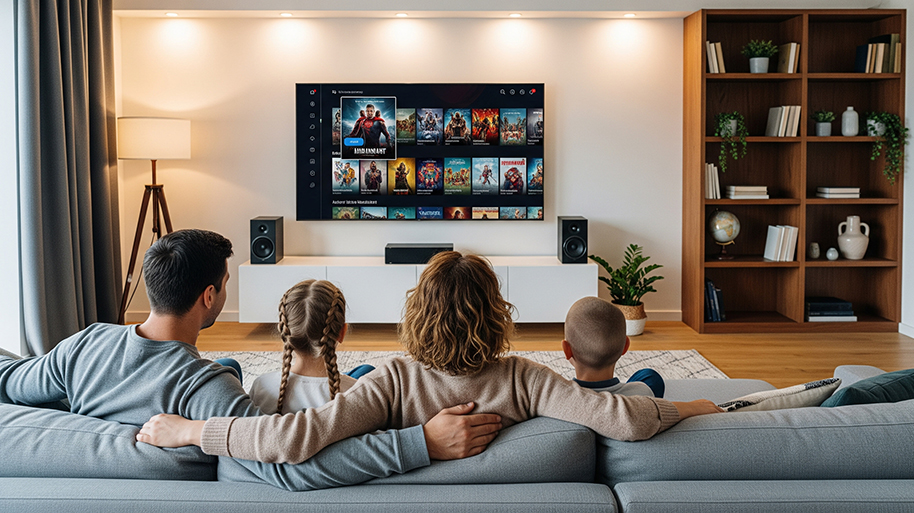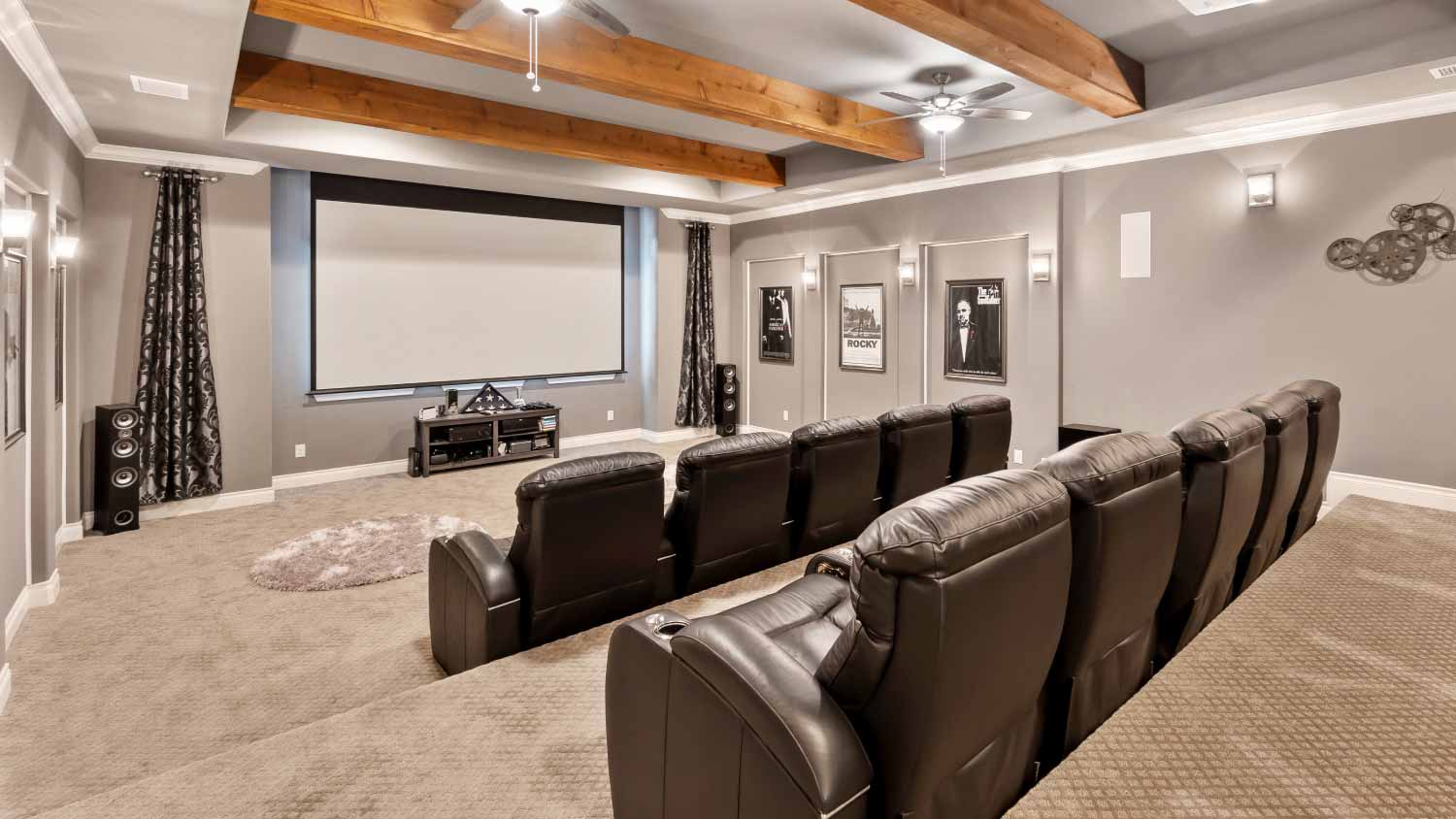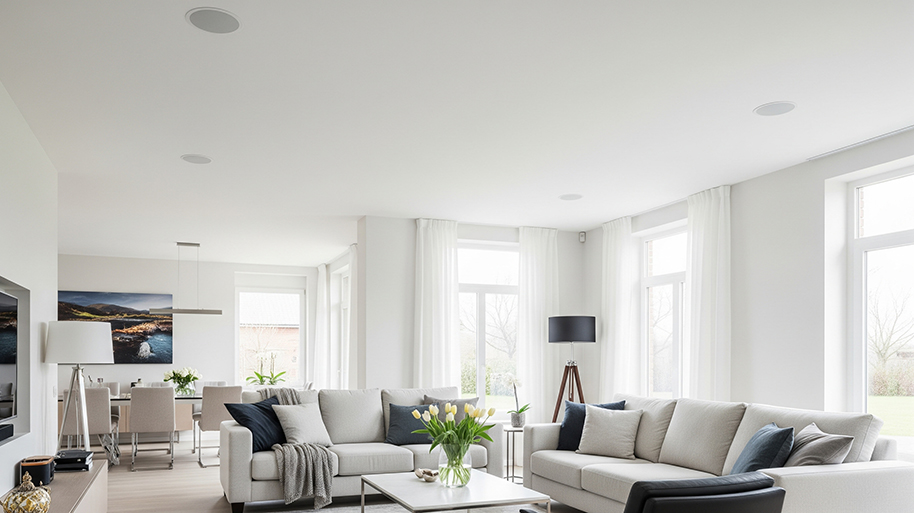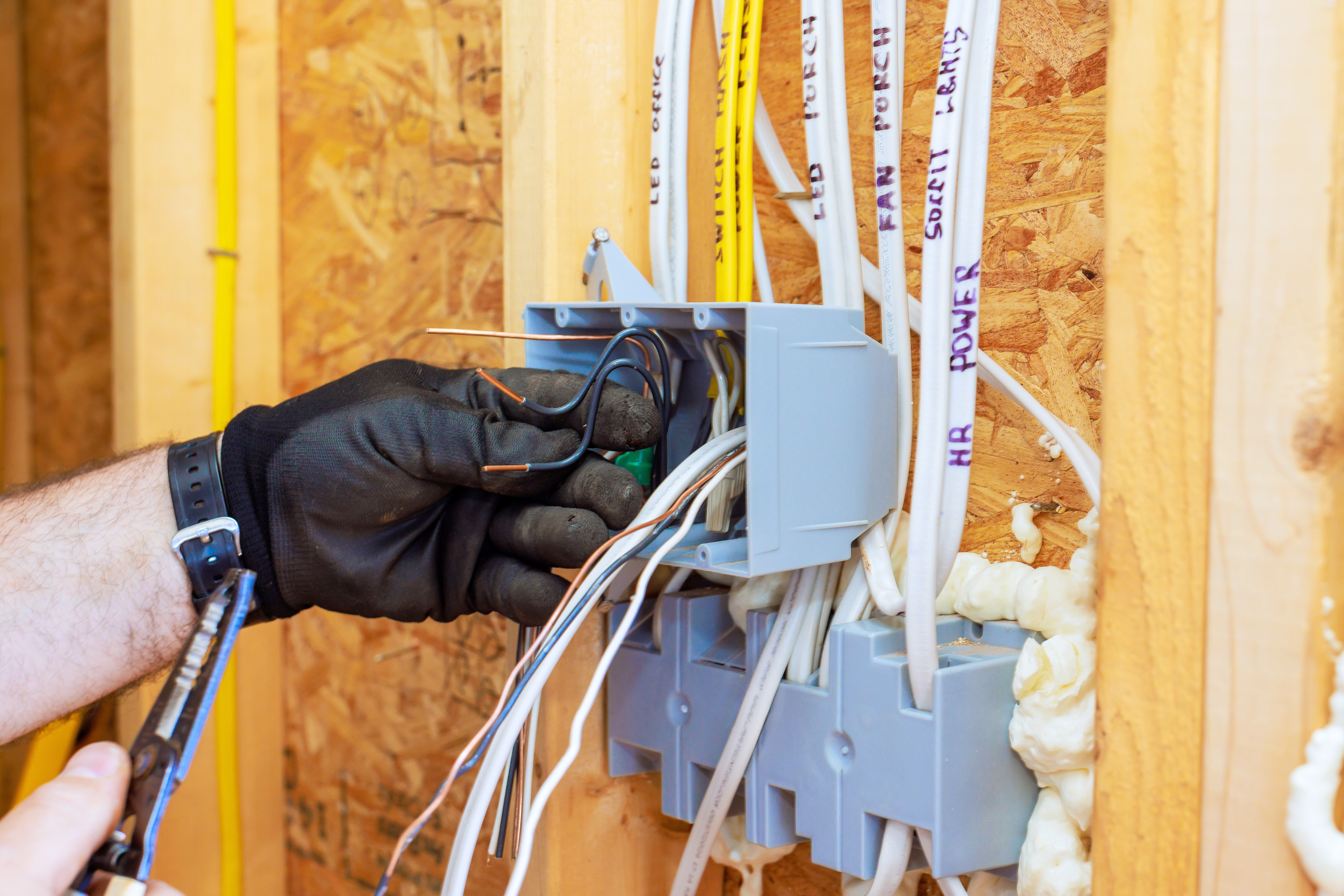
Find out what impacts TV repair cost. Learn average prices, key cost factors, and how to save when repairing your TV.
Most home theater repairs cost between $60 and $600, with an average of $280. The main factors include repair type, system complexity, and labor rates.


The cost of home theater repair varies by system type and the complexity of the repair.
Labor, parts, and brand significantly impact total home theater repair prices.
Regular maintenance of your home theater components can help prevent costly repairs.
Repairing is often more budget-friendly than replacing your entire home theater system.
Professional repairs ensure safety and optimal system performance.
This article was created using automation technology and thoroughly fact-checked and edited by an Angi Editor in accordance with our AI policy.
Homeowners often wonder about the cost of home theater repair when their system malfunctions. Most repairs range from $60 to $600, with an average cost of $280. Prices depend on the type of repair, system complexity, and labor rates. Understanding these costs helps you budget and make informed decisions for your home entertainment setup.
Whether you have a basic soundbar or a custom surround system, understanding typical repair costs and the factors that affect them can help you protect your investment and enjoy better audio-visual experiences at home.
Several key factors will impact the cost of your home theater repair. Here’s what to consider when budgeting for repairs.
The type of repair needed is often the most significant factor in determining the total cost of your home theater repair. Repairs may involve speakers, receivers, wiring, projectors, subwoofers, remote controls, or display panels.
Some repairs—such as fixing a blown speaker or a dead receiver—are essential for system use, while others, like remote replacement, are less urgent. The frequency of each repair depends on usage, age, and environmental factors.
| Repair Type | Description | Average Cost Range |
|---|---|---|
| Speaker repair | Fixing blown drivers, damaged cones, or wiring faults | $70–$250 |
| Receiver or amplifier repair | Resolving power, audio, or overheating issues | $100–$400 |
| Wiring and connection repair | Repairing or replacing cables and ports | $60–$200 |
| Projector or display repair | Bulb replacement, image correction, or screen fixes | $100–$600 |
| Subwoofer repair | Addressing blown speakers or amp failures | $80–$300 |
| Remote control/smart integration | Fixing remote or app connectivity | $40–$150 |
Speakers are central to your home theater’s sound quality. Common issues include blown drivers, worn-out cones, or faulty wiring. These problems often result from high volume, power surges, or normal wear and tear over time. Because speakers are essential, repairs are a top priority when sound quality drops or audio cuts out.
The receiver or amplifier acts as the system’s control center, distributing audio and powering speakers. Issues such as power failure, overheating, or distorted sound can prevent your system from functioning correctly. These repairs are less frequent than speaker fixes but can be more expensive due to the complexity and parts involved.
Wiring connects all components and is crucial for system operation. Problems range from loose connections to damaged cables or faulty HDMI ports. Wiring issues are common, particularly in older systems or setups that undergo frequent reconfiguration. Proper repairs are important for safety and compliance with electrical codes.
Your projector or display delivers the visual experience of your home theater. Repairs may involve replacing bulbs, fixing image distortion, or addressing screen issues. These repairs are less routine but can be among the most expensive, especially for high-end or large-format displays.
The subwoofer provides low-frequency sound, adding depth to movies and music. Common repairs address blown speakers or amplifier failures. While not always essential for system operation, a malfunctioning subwoofer noticeably affects sound quality and enjoyment.
Remote controls and smart integrations allow you to use your system with ease. Issues might involve unresponsive remotes, faulty IR sensors, or problems connecting with smart home apps. While less urgent, these repairs restore convenience and full system functionality.
Repair costs vary significantly depending on the complexity of your system. Simpler setups, such as soundbars, are less expensive to repair, while multi-speaker or custom-built systems often involve higher home theater repair costs.
| System Type | Description | Average Repair Cost Range |
|---|---|---|
| Soundbar/basic 2.1 system | Simple, few components | $60–$200 |
| 5.1 surround sound | Standard home theater with five speakers | $120–$400 |
| 7.1/9.1 surround sound | Advanced setup with multiple channels | $200–$600 |
| Custom-built/home installations | High-end, integrated, or wireless systems | $250–$800 |
Brand reputation and parts availability can significantly impact the cost of home theater repair. High-end brands like Bose, Yamaha, or Denon often cost more to repair due to proprietary components and specialized parts. Budget brands may offer lower repair costs, but sometimes have less durable parts. Always factor in parts availability and the cost of brand-specific service when budgeting for repairs.
The size and complexity of your home theater system also play a role. More speakers, larger displays, and complicated wiring increase labor time and parts cost.
| System Size/Complexity | Description | Average Repair Cost Range |
|---|---|---|
| Small/basic (1–3 components) | Minimal speakers and connections | $60–$200 |
| Medium (4–7 components) | Standard surround sound setup | $120–$400 |
| Large/complex (8+ components) | Multi-room, advanced, or custom installations | $250–$800 |
Material quality affects durability and repair costs. Premium speaker cones, heavy-duty wiring, and custom cabinetry cost more to repair or replace than basic materials. Upgrading to higher-quality parts during a repair can increase upfront cost but may offer better longevity.
| Material Type | Description | Average Repair Cost Range |
|---|---|---|
| Standard components | Basic wiring, plastic, standard cones | $40–$200 |
| Premium components | Kevlar, aluminum, copper, hardwood | $100–$600 |
| Custom/fabricated parts | Specialty or rare materials | $200–$800 |
Manufacturer or extended warranties can greatly reduce or even eliminate your home theater repair costs. Warranties commonly cover parts, labor, and service calls for a set period. Always check your documentation or contact the manufacturer before scheduling a repair. If your system is still under warranty, you might only be responsible for shipping or a small service fee.
Some companies offer maintenance plans for home theater systems. These plans may include annual inspections, cleaning, minor repairs, and software updates. Maintenance plans often cost $100 to $250 per year and can save money in the long run by catching issues early and preventing major breakdowns. They also offer peace of mind, especially for high-value or complex systems.
Home theater repairs are performed by audio-visual technicians, electricians, or specialized repair shops. Labor rates range from $50 to $120 per hour, depending on expertise and location. Service call fees may add $50 to $100 per visit.
Highly experienced or certified technicians may charge more, especially for troubleshooting or complex systems. Urban areas and regions with higher living costs tend to have higher labor rates.
Your geographic region can impact the cost of home theater repair. Urban areas and places with higher living costs often have higher service rates. In-home repairs are more expensive than off-site repairs due to travel and setup time. The system’s location within your home—such as a basement or dedicated theater room—can also impact the cost if access is difficult or specialized tools are required.
Some repairs are often bundled with additional services, such as system calibration, software updates, component upgrades, or surge protection installation costs. These add-ons cost $50 to $200 each. While not always required, they can improve system performance and reliability. Technicians may recommend them if your system is due for an upgrade or has recurring issues.
Choosing whether to repair or replace a home theater component depends on several factors. If your system is relatively new, under warranty, or only needs a minor fix, repair is more cost-effective. However, if the damage is extensive, parts are obsolete, or repair costs exceed 50% of replacement value, it’s wise to consider replacement.
Repairing is often the better option for high-end or custom systems where replacement would be very costly. Replacement makes sense if you want to upgrade features or improve reliability. Consider long-term value, as well-maintained systems can last for years, providing good ROI with occasional repairs.
DIY home theater repairs can save on labor costs, but they come with trade-offs. DIYers need the right tools, parts, and a solid understanding of electronics. While simple fixes, such as replacing cables or remotes, are manageable, more complex repairs—such as receiver troubleshooting or internal wiring—carry risks, including voiding the warranty, safety hazards, or causing further damage.
DIY repairs cost as little as $10 to $100 for parts and tools. Hiring a professional ranges from $70 to $600, depending on the repair. Call a local home theater repair pro for complex issues, electrical work, system calibration, or if you’re unsure about the problem.
If you’re looking to keep repair costs down, consider the following tips before diving into home theater repairs:
Schedule regular maintenance to prevent major issues from arising.
Compare quotes from multiple repair professionals.
Use warranty coverage when available.
Replace only faulty components, not the entire system.
Consider refurbished or generic replacement parts.
Learn basic troubleshooting to address minor issues.
Bundle multiple repairs for potential discounts.
Home is the most important place on earth, which is why Angi has helped more than 150 million homeowners transform their houses into homes they adore. To help homeowners with their next project, Angi provides readers with the most accurate cost data and upholds strict editorial standards. We extensively research project costs to develop the pricing data you see, so you can make the best decisions for you and your home. We rely on reputable sources, including the U.S. Bureau of Labor Statistics, academic journals, market studies, and interviews with industry experts—all to ensure our prices reflect real-world projects.
Want to help us improve our cost data? Send us a recent project quote to [email protected]. Quotes and personal information will not be shared publicly.
From average costs to expert advice, get all the answers you need to get your job done.

Find out what impacts TV repair cost. Learn average prices, key cost factors, and how to save when repairing your TV.

Discover the average surround sound installation cost, key price factors, and tips to save. Get expert insights to plan your home audio project.

Whether you DIY or go with a pro will determine your ceiling speaker installation cost. Follow this guide to help you budget for your home audio project.

Discover the average cost of home theater wiring, including labor, materials, and key factors that impact your total price. Learn how to budget and save on your project.

If you’re preparing to install a home theater surround sound system, here are the home theater questions you should discuss with your pro.

Discover the cost to install a projector and screen in your home, including price ranges, installation factors, and tips to help you plan your home theater project.